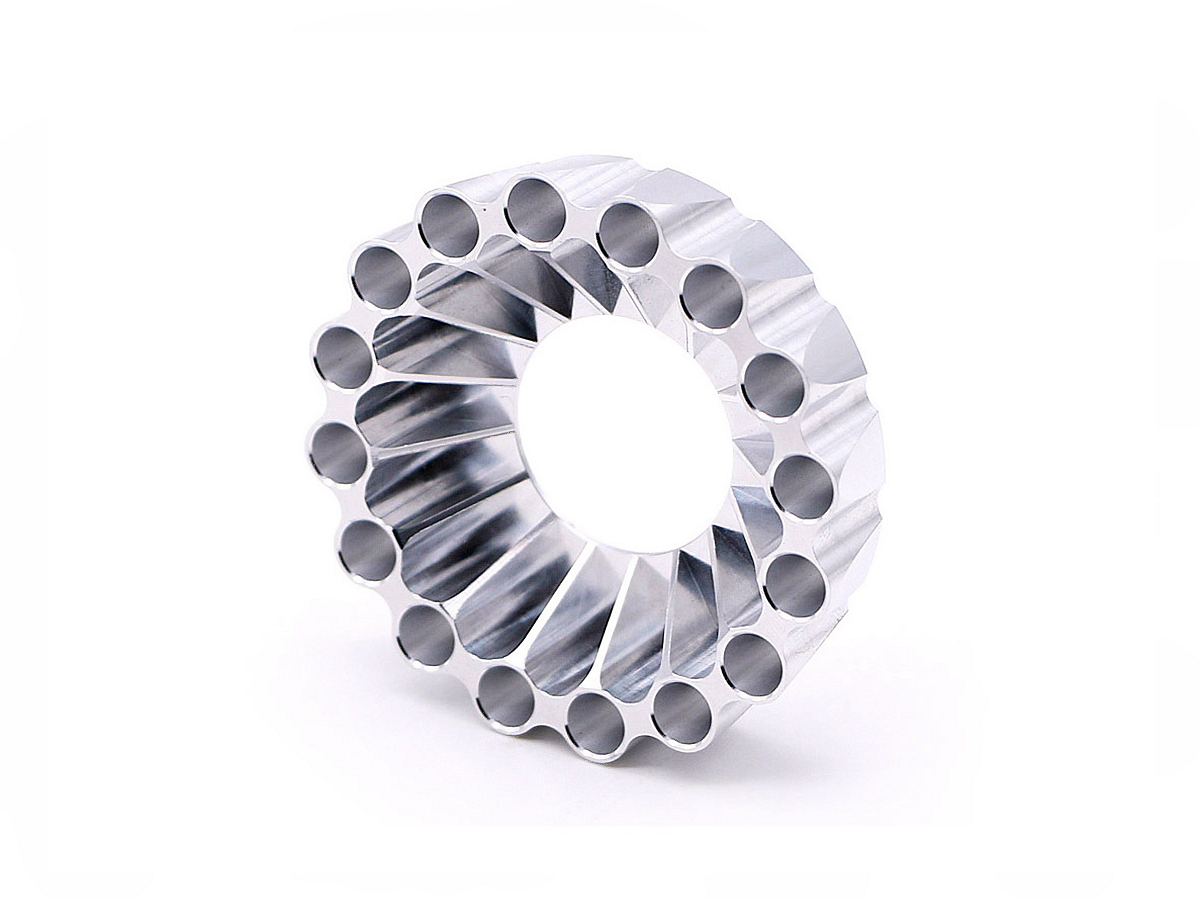Custom CNC Machined Parts for Industrial Robotics and Automation Systems
Introduction to CNC Machined Parts for Robotics and Automation
Industrial robotics and automation systems require components that offer high precision, durability, and reliability in demanding environments. From robotic arms to complex automation mechanisms, these systems depend on custom CNC machined parts to function efficiently under high load conditions, ensuring precision and long-lasting performance. Materials such as aluminum alloys (7075-T6), stainless steels (SUS316), titanium alloys (Ti-6Al-4V), and high-performance plastics (PEEK, Acetal) are commonly used to manufacture these critical components.
Using advanced CNC machining services, manufacturers produce tailored components that meet exact specifications, ensuring optimal performance in industrial robotics and automation applications.
Material Performance Comparison for Robotics and Automation Components
Material | Tensile Strength (MPa) | Density (g/cm³) | Corrosion Resistance | Typical Applications | Advantage |
|---|---|---|---|---|---|
540-570 | 2.8 | Good | Robotic arms, brackets, structural parts | High strength-to-weight ratio | |
950-1100 | 4.43 | Excellent | High-load arms, precision joints | Excellent strength, corrosion resistance | |
515-620 | 8.0 | Excellent | Actuators, bearings, sterilized components | Superior corrosion resistance | |
90-100 | 1.32 | Outstanding | Gears, bushings, insulation | Excellent wear resistance, high thermal stability |
Material Selection Strategy for CNC Machined Robotics Components
Material selection is crucial for ensuring the long-term performance and durability of CNC machined parts in robotics and automation systems. The following criteria guide the selection process:
Aluminum 7075-T6 is commonly used for robotic arms and lightweight structural components due to its superior strength (up to 570 MPa) and low weight, making it ideal for applications requiring strength without compromising on performance.
Titanium Ti-6Al-4V is used for high-load robotic arms and joints where strength and corrosion resistance are essential. With tensile strength up to 1100 MPa, it provides excellent durability, especially in harsh environments.
Stainless Steel SUS316 is preferred for actuators, bearings, and components exposed to corrosive or sterilized environments due to its outstanding corrosion resistance and mechanical properties, especially in high-humidity or saline environments.
PEEK is an ideal material for parts like gears, bushings, and insulation, where wear resistance, low friction, and high thermal stability are crucial for consistent operation under demanding conditions.
CNC Machining Processes for Precision Robotics Components
CNC Machining Process | Dimensional Accuracy (mm) | Surface Roughness (Ra μm) | Typical Applications | Key Advantages |
|---|---|---|---|---|
±0.005-0.01 | 0.2-0.8 | Complex linkages, actuators, structural parts | High precision, superior surface finish | |
±0.005-0.01 | 0.4-1.2 | Rotational shafts, pins | Exceptional accuracy for rotational components | |
±0.005-0.02 | 0.4-1.0 | Complex assemblies, parts with multiple features | Complex geometries, high precision | |
±0.002-0.005 | 0.1-0.4 | Gears, cam surfaces, precision components | Ultra-precise dimensions, excellent finishes |
CNC Process Selection Strategy for Robotics and Automation Components
Selecting the right CNC machining process ensures components meet functional, dimensional, and performance requirements:
5 Axis CNC Milling is ideal for complex linkages and components with intricate geometries, such as robotic joints and actuators. With tolerances of ±0.005 mm and surface finishes as low as Ra 0.2 µm, this process delivers exceptional precision.
Precision CNC Turning is used for rotational parts like shafts, pins, and spindles, offering exceptional accuracy (±0.005 mm) and surface finishes to ensure smooth operation in moving parts.
Precision Multi-Axis Machining is perfect for components with multiple features and intricate shapes, ensuring tight tolerances (±0.005–0.02 mm) and precise control over complex geometries.
CNC Grinding is employed for parts like gears and cam surfaces that require ultra-precise dimensions (±0.002–0.005 mm) and superior surface finishes (Ra ≤0.4 µm).
Surface Treatment Performance Comparison for Robotics Components
Treatment Method | Surface Roughness (Ra μm) | Wear Resistance | Corrosion Resistance | Surface Hardness | Typical Applications | Key Features |
|---|---|---|---|---|---|---|
0.4-1.0 | Excellent | Excellent (ASTM B117 >1000 hrs) | HV 400-600 | Aluminum structural parts | Enhanced durability, corrosion resistance | |
0.8-1.6 | Moderate | Excellent (ASTM B117 >1000 hrs) | Unchanged | Stainless steel components | Corrosion resistance, minimal maintenance | |
0.2-0.5 | Exceptional | Excellent (ASTM B117 >1000 hrs) | HV 1500-2500 | Wear-prone robotic parts | Superior hardness, low friction | |
0.2-0.8 | Good | Excellent (ASTM B117 >500 hrs) | Unchanged | Medical robotics parts | Smooth finish, corrosion resistance |
Surface Treatment Selection for Robotics Components
Surface treatments are crucial for extending the lifespan and ensuring the optimal performance of robotics components:
Hard Anodizing is ideal for aluminum components like robotic frames, providing enhanced durability, corrosion protection (ASTM B117 >1000 hrs), and improved wear resistance.
Passivation improves corrosion resistance without altering the dimensions of stainless steel components, ensuring reliable performance in harsh environments.
PVD Coating is used on high-wear robotic parts like joints, pins, and shafts, providing exceptional hardness (HV 1500-2500) and low friction for longer component life.
Electropolishing is best suited for medical robotics components, providing a smooth surface finish (Ra ≤0.8 µm) while enhancing corrosion resistance.
Typical Prototyping Methods for Robotic Components
CNC Machining Prototyping: CNC machining prototyping ensures dimensional accuracy down to ±0.005 mm, allowing for rapid testing of fit and function of robotics components before full-scale production.
Metal 3D Printing (Powder Bed Fusion): This method produces metal prototypes with typical accuracy within ±0.05 mm, allowing for quick iteration and validation of complex geometries in robotics applications.
Quality Assurance Procedures
Precision Dimensional Inspection (CMM): Verification of dimensional tolerances within ±0.005 mm.
Surface Roughness Verification (Profilometer): Ensuring compliance with specified surface finishes.
Mechanical and Fatigue Testing (ASTM E8, E466): Evaluating strength and endurance.
Non-destructive Testing (Ultrasonic, Radiographic): Structural integrity validation.
ISO 9001 Documentation: Complete traceability and quality documentation.
Industry Applications
Precision robotic arms and end-effectors.
Aerospace robotics systems.
Medical and surgical robotic components.
Related FAQs:
What are the benefits of custom CNC machining for robotics?
Which materials are best for high-performance robotics components?
How do surface treatments improve robotics part longevity?
What quality control measures are applied to CNC machined robotic components?
What industries use CNC machined components in robotics systems?

